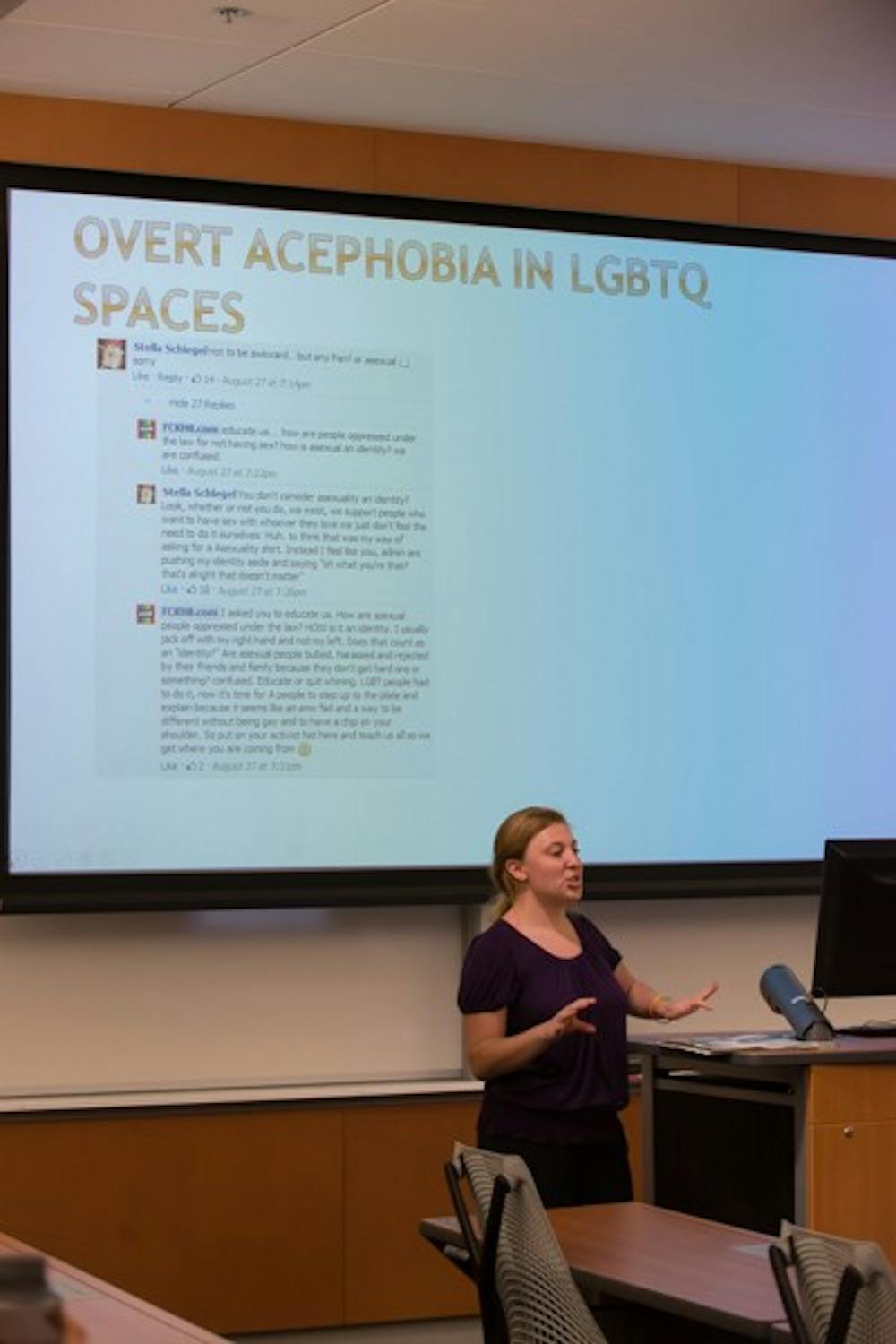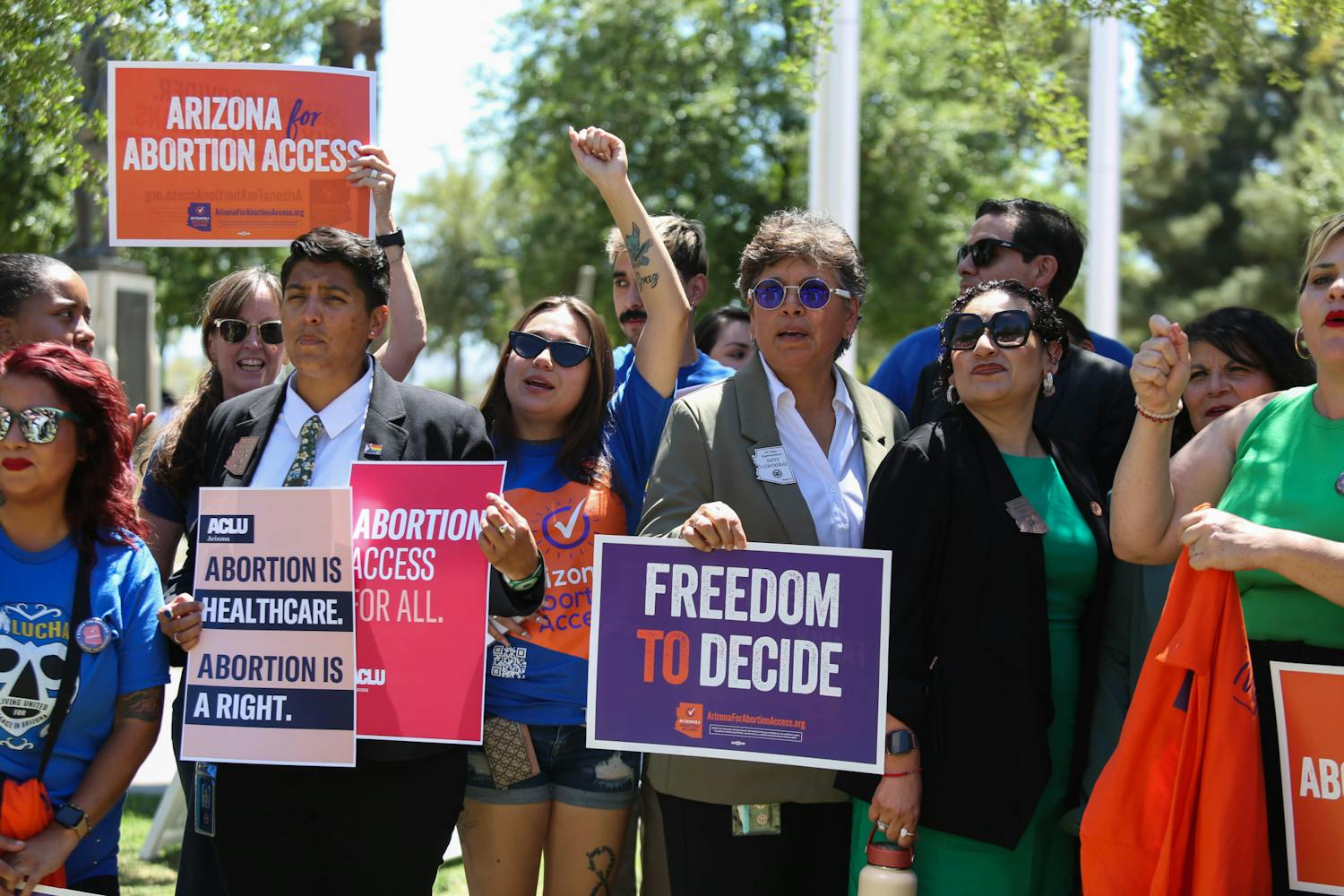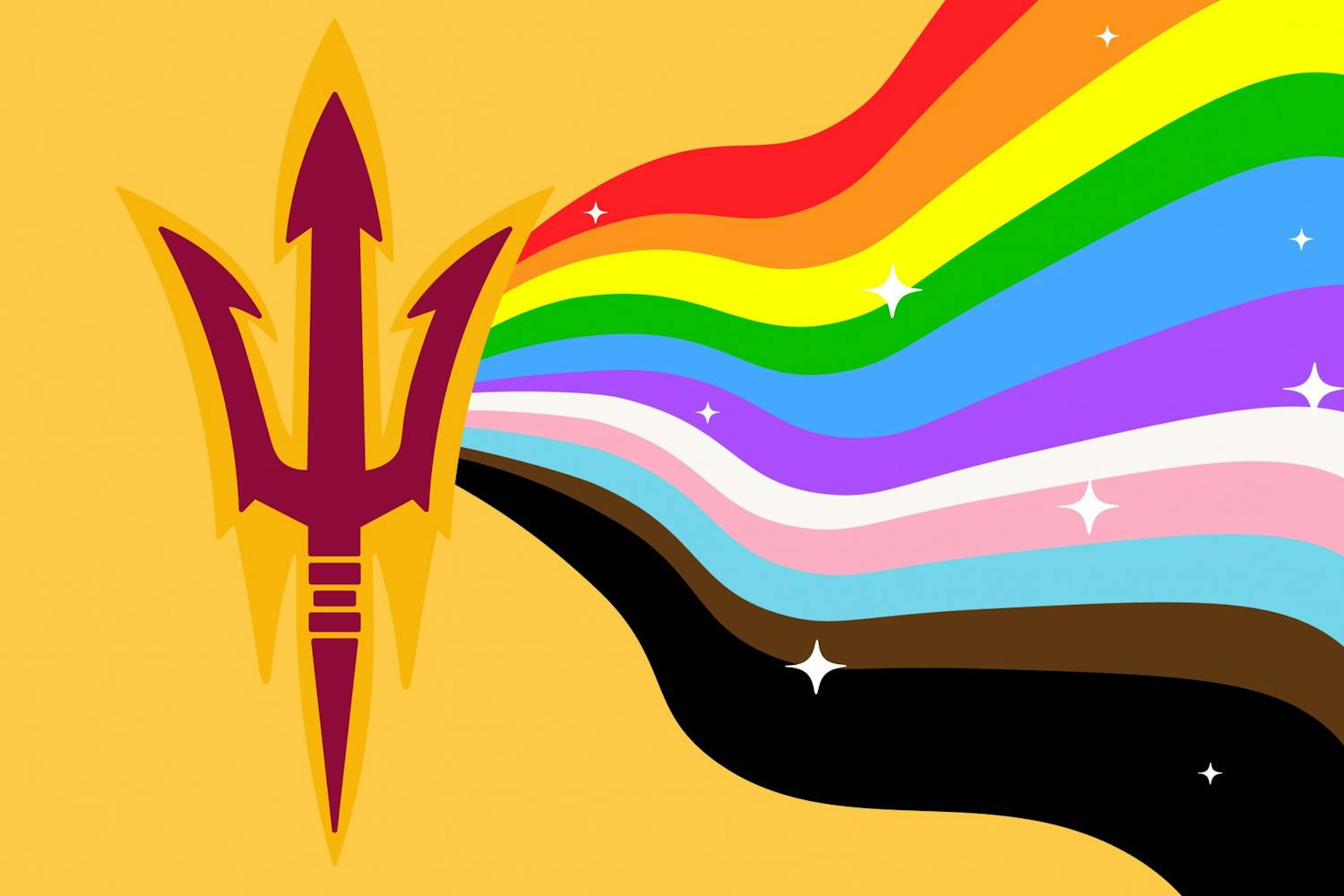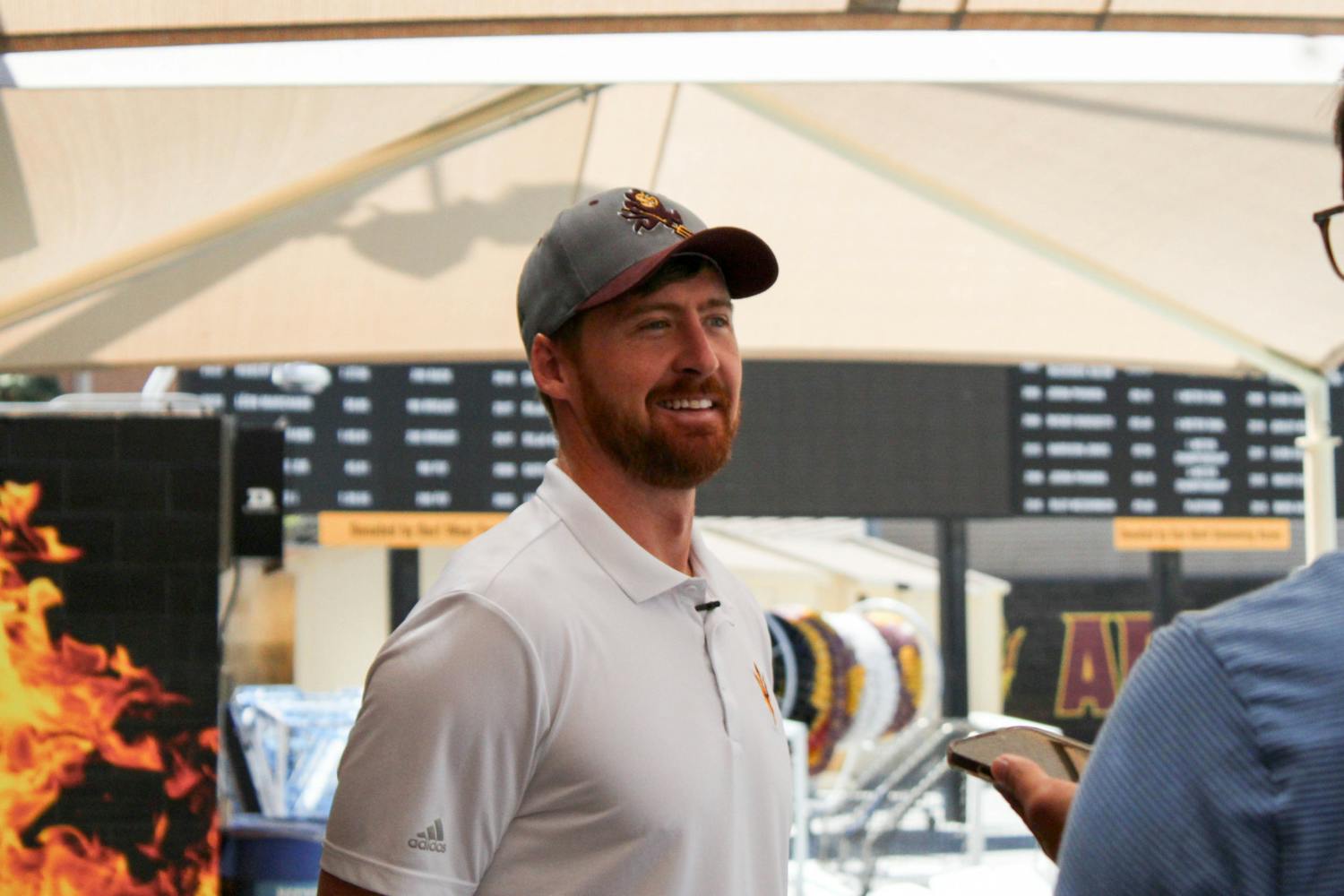 Aces of Arizona president Gretchen Ayub speaks to a group of students about asexuality during a discussion in Tempe on April 9. (Photo by Andrew Ybanez)
Aces of Arizona president Gretchen Ayub speaks to a group of students about asexuality during a discussion in Tempe on April 9. (Photo by Andrew Ybanez)Aces of Arizona president Gretchen Ayub told a group of students that someone’s sexuality isn’t a black and white issue.
“It doesn’t work like that,” she said.
Ayub led a discussion on the misconceptions and stigmas of asexuality as a part of Sexual Wellness Week Wednesday on the Tempe campus.
She opened the discussion with a trailer of the documentary (A)sexual. The clip featured random people sharing what they knew about asexuality, most of which was misguided.
Ayub said the clip's purpose was to demonstrate how little people actually know about asexuality.
“It’s not something that is covered in sex ed,” she said.
Asexuality or nonsexuality is the absence or lack of sexual attraction toward someone, no matter the gender.
Ayub said asexuality does not mean someone is celibate or abstinent.
“People often confuse asexuality with choosing not to have sex,” she said. “Someone’s sexual orientation is not necessarily going to dictate their sexual activity.”
Asexuality is distinct from abstention from sexual activity and celibacy, which are behavioral and sometimes motivated by religious beliefs and are a choice while asexuality is a sexual orientation.
Some asexual people do engage in sexual activity despite lacking the desire or sexual attraction to have sex.
Other misconceptions about asexuality pointed out during the discussion were that people who are asexual have something anatomically or psychologically wrong with them.
“Someone who is asexual is physically capable of sexual intercourse even if they lack the desire,” Ayub said.
Ayub also said that a lot of asexual people identify themselves in a gray area.
“There are demisexuals who can only experience sexual attraction after an emotional bond has been formed," she said. "The bond doesn’t have to be romantic. Gray-asexual is someone who identifies themselves somewhere in between sexual and asexual.”
People who are asexual are able to experience romantic attraction without sexual attraction.
Ayub said romantic and sexual attraction don't necessarily go hand in hand.
“I had a friend who was bisexual but was only romantically attracted to women,” she said.
Ayub said one in every 100 adults identify themselves as asexual; yet, it is still a topic that is rarely talked about.
“There is always this notion that everyone must experience sexual attraction to somebody,” she said. “It tends to create a mentality that those people aren’t one of us or they are perceived as inferior.”
Asexuals are not officially accepted in LGBTQ spaces, as there isn’t a belief that such an orientation actually exists, Ayub said.
“People will deny it and say it’s just a phase,” Ayub said. “They feel rejected in LGBT spaces and the outside world making them not feel safe anywhere.”
Ayub referenced a rant in which an LGBTQ group known as FCKH8 called people who identified asexuality as an “emo fad.”
“I assumed the idea behind FCKH8 was ‘f--k hate’ or to not bully,” she said. “That’s going to affect people negatively and reflect how they view asexual people and make it OK to say those things to people.”
After Ayub concluded her presentation, audience members asked questions and had an open discussion.
Earth and environmental studies freshman Brianna Vasquez said one of her friends identified himself as asexual and that was the first time she had heard of the term.
“I feel like it was my duty as a friend to learn more about asexuality and have more respect for it,” she said. “I think there needs to be more education on the misconceptions.”
Communications junior Amanda Martin said she initially went to the discussion for extra credit.
“I was also trying to learn more about the meaning behind the terminology,” she said.
Reach the reporter at kgrega@asu.edu or follow her on twitter @kelciegrega




